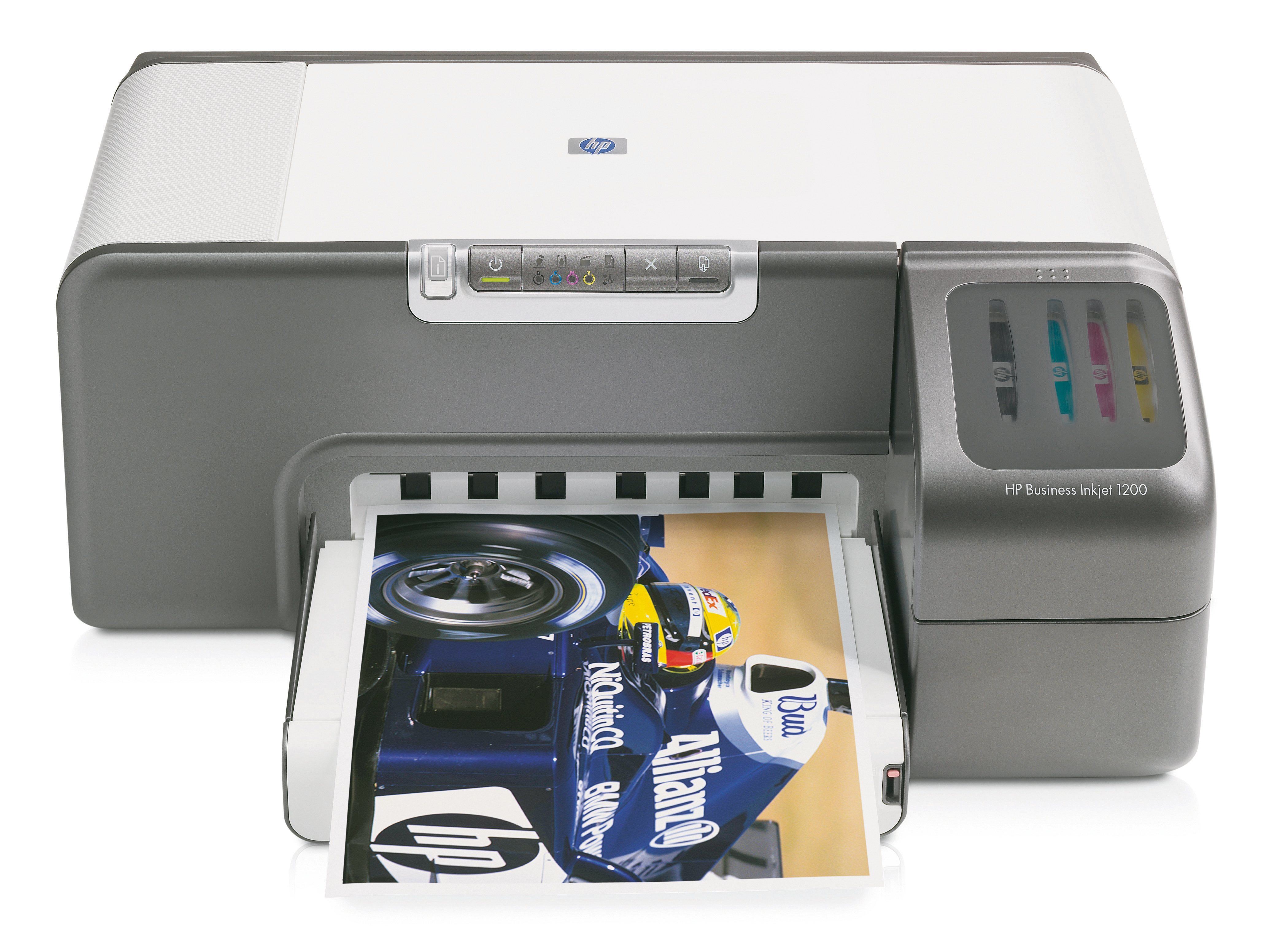TechRadar Verdict
If your needs aren't great, you'll be happy with the 1200d
Pros
- +
Easy to use
Separate ink tanks
Cons
- -
Slow photo speeds
Small paper tray
Why you can trust TechRadar
Although the ubiquitous photo inkjet printer is all the rage at the moment, there's still a place in many offices for colour inkjet printers such as HP's Business Inkjet 1200d.
Any business printer needs to offer priority to charts, presentations, spreadsheets and text rather than photos, but the 1200d even handles those pretty well, as we'll discuss in a minute.
The model here is the USB 2.0-equipped 1200d, an A4 printer that holds 150 pages and is suitable for a small office. HP offers four different versions of the 1200, and that means delving into HP's nomenclature mumbojumbo in order to understand what each one includes.
The next version, the 1200dtn, (£187) has a built-in 10/100Base- TX Fast Ethernet port, so you can hook it up to your office network. It also features a second paper tray that holds an additional 250 sheets for a total capacity of 400 pages.
If you're really feeling flush, there's the 1200dtwn at £217, which is a 1200dtn with a Wi-Fi (802.11b and 802.11g) receiver built in for workgroup printing. It's a great idea if you want to cut down on cabling and your office Macs have AirPort cards fitted.
Quick to set up
Setting up the 1200d takes less than 30 minutes - and that was taking it leisurely. It uses four individual ink cartridges: black, cyan, magenta, and yellow; there's no light magenta, red, matte black or any of the additional inks you often see in specialist inkjet photo printers.
The print heads are separate from the ink cartridges, and they are installed in a separate carriage. The nice thing about having all the ink cartridges and print heads separate, is that you can replace only what you need to. Replacement ink cartridges and print heads are £23 each. So, if your print heads get blocked or dried out you can refurbish the printer.
While the 1200d can print on plain paper, special kinds of inkjet paper are available to get the best results. HP's Premium A4 Inkjet Paper (200 sheets) costs around £16; and a pack of HP's matte Brochure and Flyer Paper (100 sheets) costs just £23.
The 1200d is rated at 9ppm (pages per minute) for black text in normal quality mode; we managed to rack up around 6.2 pages per minute when printing a 50-page Word document. Our timings were from click (when you click Print) to clunk (when printing is finished), so they include whatever image processing needs to be done on your Mac.
When printing a 15-page, full-colour PowerPoint presentation, the 1200d averaged a mere 1.5ppm, notably pokier than its rated 4ppm - and that was when we were printing from a dual 2GHz Power Mac G5. A two-page Excel spreadsheet took 45 seconds. On the whole we are quite pleased with the 1200d's speed for business documents; no, it's not as fast as a monochrome or colour laser, but it's not nearly as expensive.
The 1200d's image quality is good for a general inkjet printer. On HP's Premium stock you get crisp and clean lines; on plain old copier paper you get not-soclean lines and fair bit of feathering. The colour accuracy in our PowerPoint presentation is excellent; there aren't any colour shifts, but there is some minor banding in colour gradients - that's to be expected in a three-colour plus black printer, though.
Printing an 8x10-inch photo (you can't do borderless prints) in Photoshop takes about eight minutes, which is slow compared to a speed-demon such as the Canon i9900 Photo Printer.
The 1200d reproduces images containing metallics, dyed cloth and bright colours well, but more natural tones, such as skin and earth tones, lack consistency and warmth. Remember, the 1200d isn't designed for photo output; if your photo-printing demands ever start to grow, consider having a dedicated photo printer sat alongside your 1200d. Roman Loyola
Tech.co.uk was the former name of TechRadar.com. Its staff were at the forefront of the digital publishing revolution, and spearheaded the move to bring consumer technology journalism to its natural home – online. Many of the current TechRadar staff started life a Tech.co.uk staff writer, covering everything from the emerging smartphone market to the evolving market of personal computers. Think of it as the building blocks of the TechRadar you love today.
